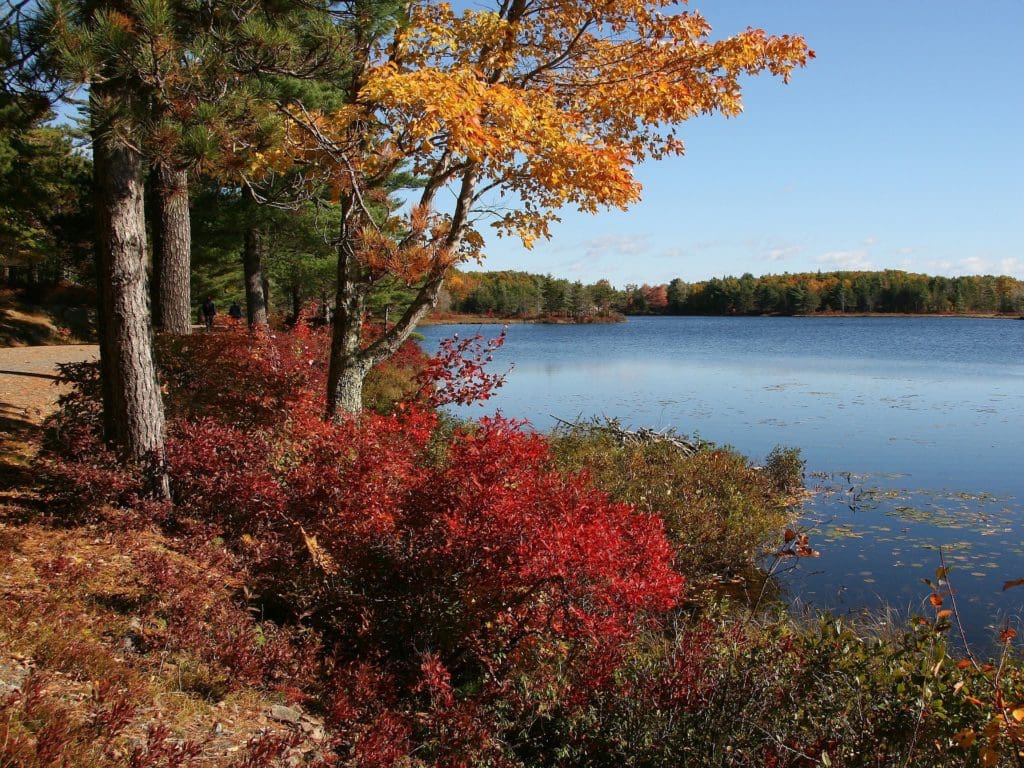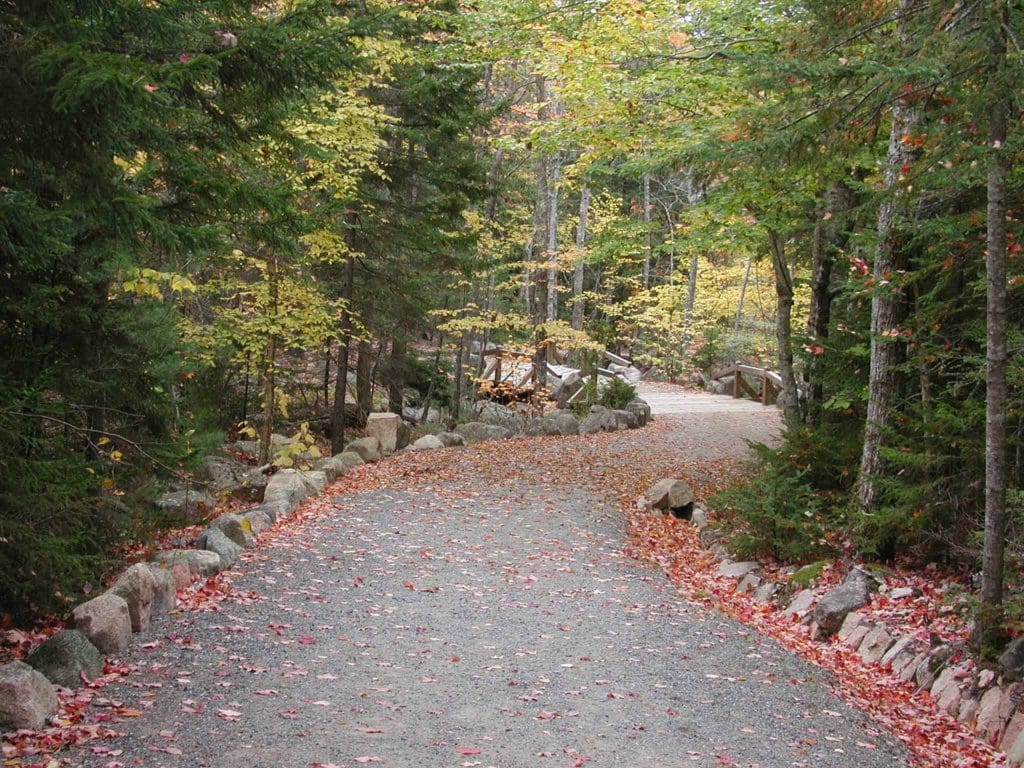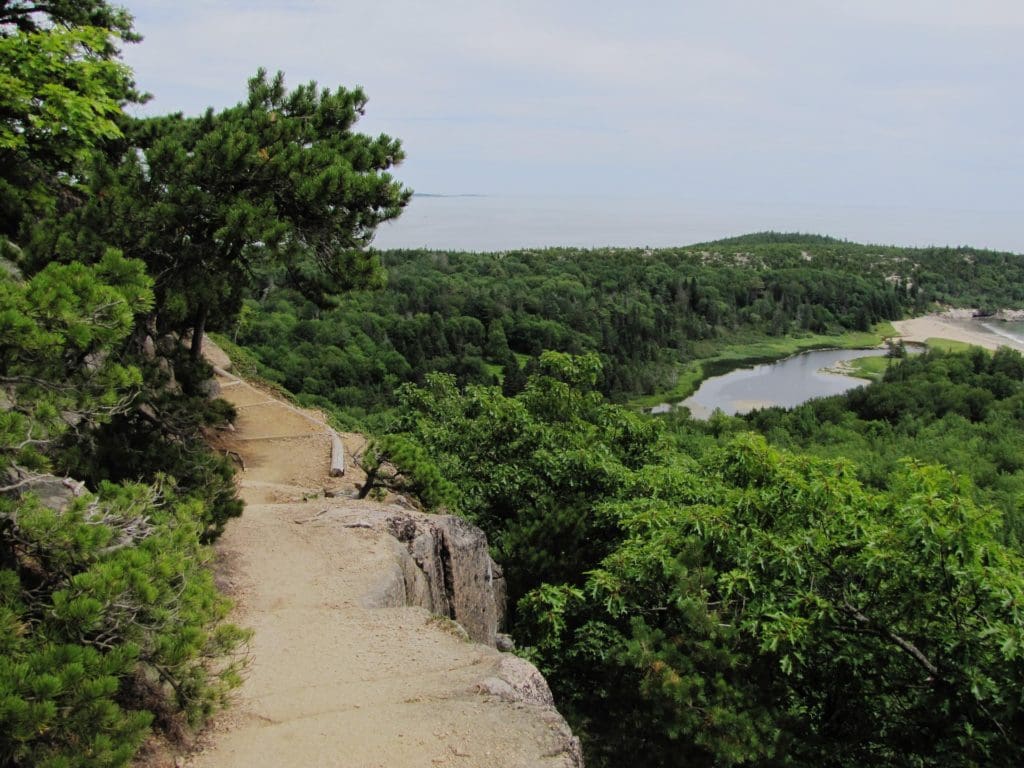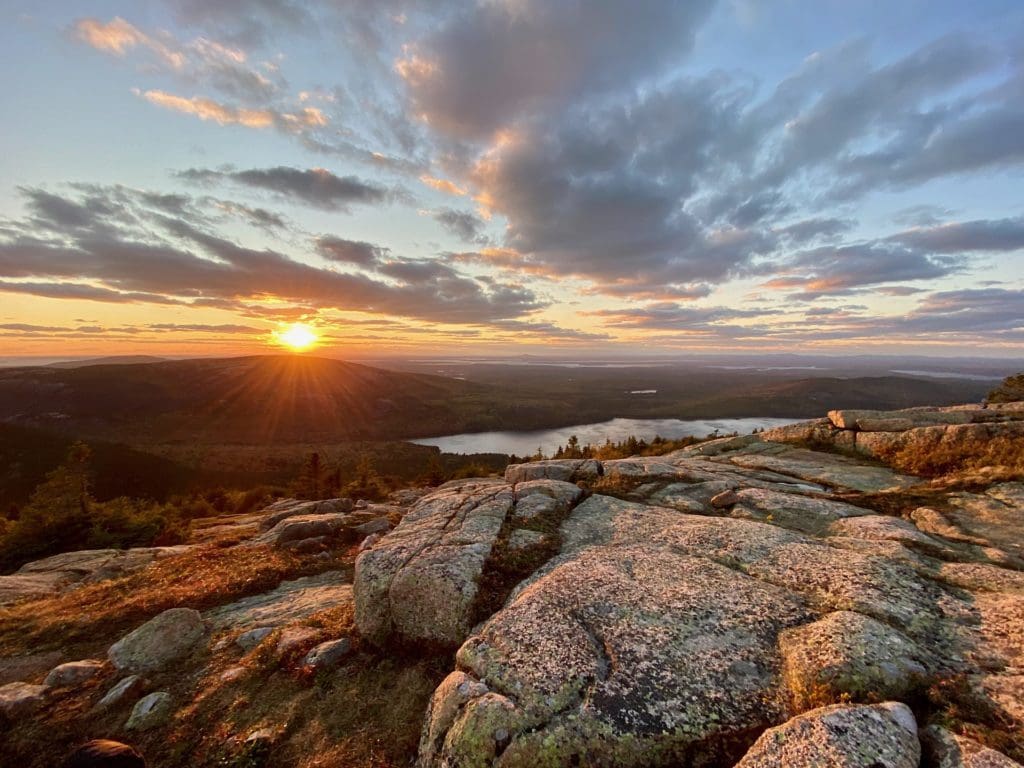Acadia National Park, located on the southeast coast of Maine, packs an abundance of natural beauty into a relatively small area. Its scenic beauty and rich cultural heritage draw 3.5 million visitors a year, making it one of the top 10 most-visited national parks in the U.S.
Tourism began in the mid-1800s with artists venerating Mount Desert Island in their work. Friends and patrons, known as the “rusticators” followed them there, enjoying the fresh air and relaxation. The traffic prompted the establishment of the village of Bar Harbor. During the “Gay Nineties,” the area became a retreat for the affluent – Rockefellers, Morgans, Astors, Fords, and Vanderbilts began building elegant estates for summer escapes.
The Hancock County Trustees of Public Reservations was established in 1901 for the purpose of acquiring property to be reserved for public use and preserving the Acadian landscape. The organization donated 5,000 acres to the federal government in 1916 and it became the first national park east of the Mississippi, named Lafayette National Park. Today the park is named Acadia and spans 48,000 acres.
Acadia’s Carriage Roads
Weaving through the center of the park, 45 miles of historic broken-stone carriage roads loop around lakes and mountains. The roads were originally funded by John D. Rockefeller, Jr. and built between 1914 and 1940 using state-of-the-art engineering to highlight the scenic views. The junior Rockefeller was an avid horseman and wanted to travel by horse and carriage on motor-free roads.
Today, the carriage roads are shared by cyclists, pedestrians, and horses as they enjoy the scenic safety of car-free lanes. 17 uniquely designed stone-faced bridges span streams, waterfalls, and cliffs. Large granite coping stones line the roads to serve as guardrails, affectionately called “Rockefeller’s Teeth.” Two historic gate lodges stand as welcome sentries to the carriage road system. Travel Maestro tip: During the muddy season of March and April, carriage roads often close to all traffic.
During winter, the Acadia carriage roads are perfect for cross-country skiing and snowshoeing. Snowmobiles are allowed to use the unplowed park roads, but not allowed on the carriage roads or off-road. Travel Maestro tip: Rental equipment is available in local communities.
Hiking Trails
More than 150 miles of hiking trails at Acadia National Park traverse diverse environments. You can hike from sea level to summits, beside the edge of lakes, through the forest, and along exposed cliffs. Some of Acadia’s summit trails can be challenging. You’ll negotiate granite stairs and even iron rung ladders with the reward of spectacular views of the Atlantic Ocean at the top. Travel Maestro tip: You’ll appreciate trekking poles and sturdy footwear on summit hikes.
Of course, you can also get amazing ocean views without much elevation on several coastal hiking trails in Acadia. Maine’s coastline is quite dramatic with huge granite slabs, the highest rocky headlands on the Atlantic, and extensive birding opportunities. Hike to see natural spectacles such as Thunder Hole and Otter Point. Travel Maestro tip: Hike the Bar Island Trail to walk a half-mile gravel sand bar that appears during low tide. From the island, you can see Bar Harbor and Frenchman Bay or tidepool on the island.
Forest and lake hikes take in woodlands, glacially carved valleys, mountain views, and rocky gorges. Some trails have level boardwalks and others have steep climbs. Travel Maestro tip: Always check the trail elevation profile before choosing a hike in Acadia National Park. Take a map, water, and energy snacks.
Tidepooling in Acadia National Park
Where land and seawater meet on the rocky shores of Acadia National Park, you can “sea” a whole new world – a diverse neighborhood of marine life is observable as the tide ebbs. Mussels filtering water cling to rocks, while snails feeding on algae scour the rocks. Crabs and sea stars scuttle about feeding on smaller creatures. Curious seals often pop up from deeper water and seal pups wait for mom on the rocks. Travel Maestro tip: The best time to tidepool is between 1.5 hours before to 1.5 hours after low tide. The tide at Acadia rises 8 to 12 feet each tide, so check the tide chart and know when low tide occurs.
Acadia National Park Ranger Programs
In the summer and fall, various ranger-guided programs help visitors learn more about the history and nature of the park. You can walk a trail or carriage road with a ranger as he or she talks about the local animal and plant life. During summer, rangers take visitors by boat to Baker Island to see pioneer homes and a graveyard, an 1855 lighthouse, and a group of huge granite slabs called the ‘dance floor.’
Need to Know
- Each person 16 years old and above needs an Entrance Pass to visit Acadia from May through October.
- A Vehicle Registration is required to drive up the Cadillac Summit Road during daylight. The registration assigns a timed entry to relieve vehicular congestion. Pedestrians and cyclists do not need registrations.
- From late June through early October, a free shuttle called Island Explorer provides service between park destinations (visitor centers, campgrounds, trailheads, carriage road entrances) and local villages (shops, restaurants, hotels), and the Bar Harbor-Hancock Couty Regional Airport. Travel Maestro tip: There are regular stops, but you can also flag it down anywhere along its route.
- There are no hotels within the park, but a variety of accommodations are available in nearby towns. For reservations, contact a Covington vacation advisor.
- Spring is typically foggy with temperatures 30°-70°F. Summer weather can change quickly from warm and sunny to cold and rainy, 45°-90°F, so prepare with extra layers for unpredictable weather changes. The first snowfall in Acadia begins in November and can continue through April.
- Acadia National Park is renowned for vivid autumn color, making fall a very popular time to visit. The peak color in the park usually comes in mid-October. Travel Maestro tip: Visit the Maine Fall Foliage website for status updates every Wednesday during the foliage season.
No matter what season Acadia speaks to you, reach out to Covington for help planning your trip to this amazing national park.










Leave a Reply